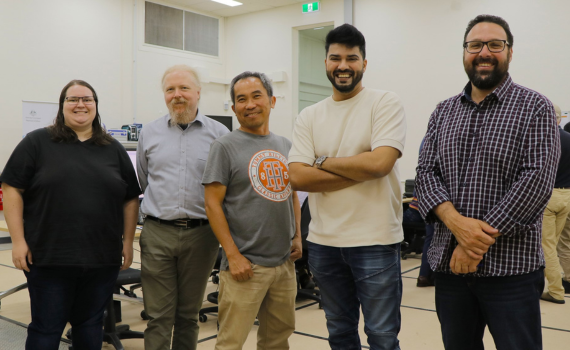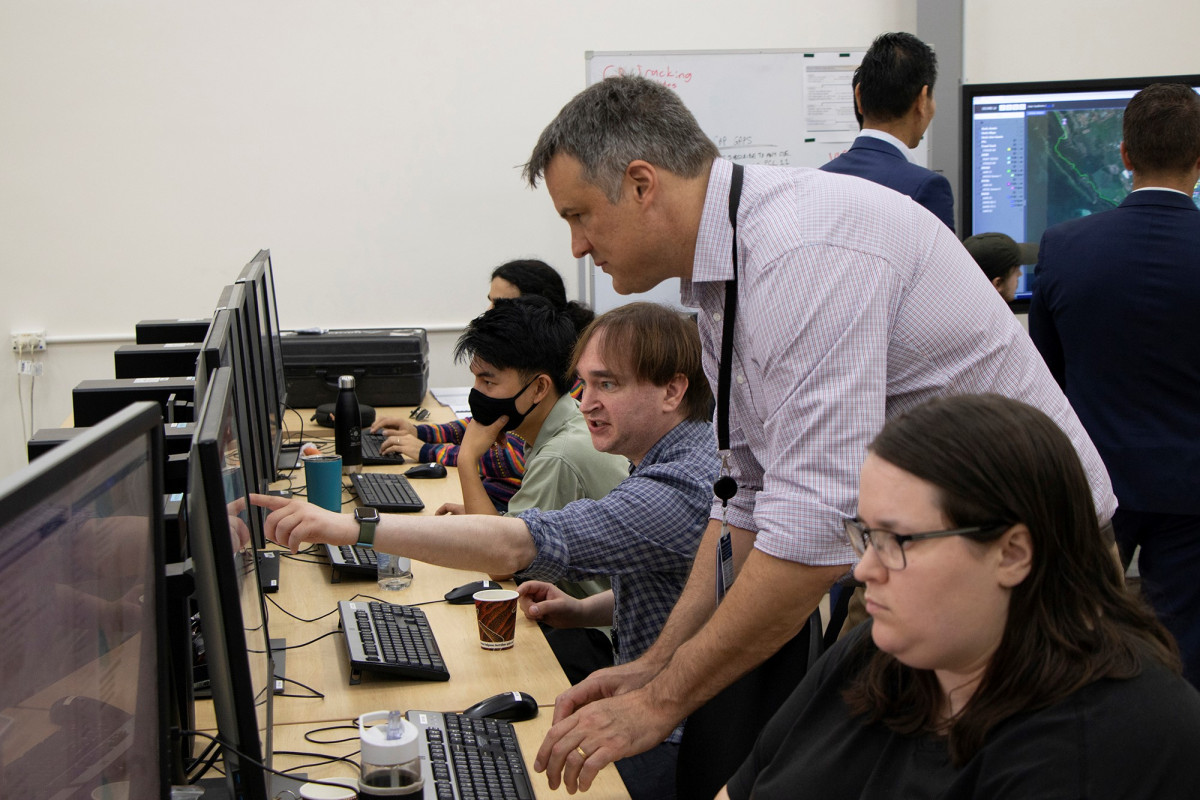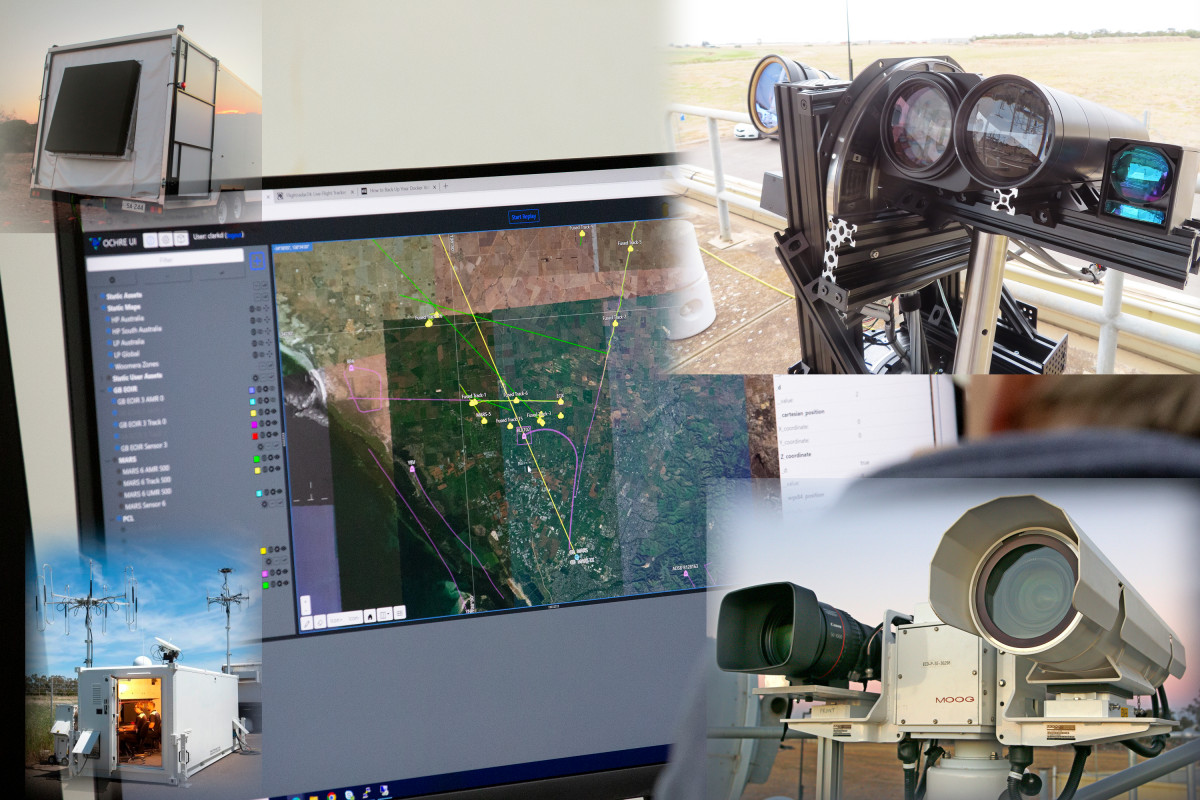Bold new vision for sensor and effector development

For many years, DSTG’s Sensor & Trials Facility (STF) on RAAF Edinburgh has been a staging point for the development and testing of novel radio frequency (RF) and electro-optic (EO) sensor capabilities. Defence scientist Dr Joe Fabrizio, who leads DSTG’s research in RF sensing and electronic warfare, says his team is implementing a bold new vision for the STF as a collaborative hub with a permanent trials network at its nucleus.
‘To tackle the evolving threats facing Defence we needed a capability development environment to integrate the strengths of different sensors and multiple countermeasures,’ explains Dr Fabrizio. ‘An ability to work together in a fully integrated environment in partnership with industry is essential to demonstrating the required capabilities.’
Continuous development will aid trial preparation
STF Capability Manager Mr Matthew Brincat says R&D communities from across DSTG and industry are now invited to work together at the STF facility, which is unique in Defence, to develop systems that combine passive and active RF and EO sensors, as well as effectors such as directed energy lasers, including fusion of sensor data in real time to cue effectors.
At the core of the upgraded STF is an open, distributed, information integration architecture that allows for real time data fusion as well as low-latency cueing of sensors and effectors. Mr Brincat says the ability to undertake continuous capability development at the STF will be particularly valuable for reducing systems integration risks prior to significant Defence trials. Research teams are already using the STF to iron out highly-nuanced system aspects, such as data latencies.
Systems can now remain permanently set up and integrated for development and testing in practical environments. Defence scientists and industry partners can immediately address lessons learned during live experiments and demonstrations, all within easy physical access to DSTG’s Edinburgh laboratories.
‘Industry primes typically lead the development of complete systems for Defence,’ says Dr Fabrizio. ‘We can accelerate the delivery of Defence capability by acting as a catalyst and helping to glue together industry capabilities in a secure and neutral environment. The STF provides convenient access for Defence sponsors to live demonstrations of evolving capability, and professional development opportunities for Defence scientists to practise competencies in real world environments.’
Salus event tests new vision
The first rigorous try-out of the new STF was an integrated sensing activity called Salus*, led by Defence scientist Mr Rocco Melino.
‘Salus demonstrated rapid and accurate real-time track fusion of an airborne threat in a multi-target environment,’ reports Mr Melino. ‘In addition, we demonstrated effective cueing between sensors with aspiration to include handover of high fidelity tracks to effector systems in future events.’

Exciting future vision to support Defence priorities
The 2023 Defence Strategic Review lists an integrated air and missile defence (IAMD) system as an urgent priority. ‘When Defence comes to acquire an operational IAMD system, deep S&T knowledge and practical experience will support the Commonwealth to manage risks and benchmark performance,’ says Dr Fabrizio. ‘The development of end-to-end systems at the STF enables Defence scientists to maintain a knowledgeable workforce with strong competencies in this critical area for Defence. Furthermore, when industry partners are engaged to develop operational systems, the STF enables the integration of industry capabilities, initial validation and verification activities, as well as the transition of DSTG’s innovative solutions to operational products via industry.’
Exciting future opportunities include the direct participation of industry partners such as Lockheed Martin Australia (LMA), which has been selected as the strategic partner for Defence AIR6500-1 to support integrated sensing efforts for IAMD. Secure infrastructure and industry spaces currently enable the STF to host assets from CEA Technologies, and in future, passive radar systems from Silentium Defence.

By supporting test and evaluation of Defence innovations and industry-developed technologies in a practical, real-world environment, the Sensor and Trials Facility is accelerating delivery of capability to Defence. It’s a great example of the More, Together Defence S&T Strategy in action!
DSTG enhances its science and technology impact by collaborating with research and industry partners, nationally and globally.
We access and leverage world-leading science, technology, knowledge and innovation, through collaboration with industry, academia and international agencies. Learn more about our partnerships.
*Salus was the Roman goddess of safety and well-being of both the individual and the state.

